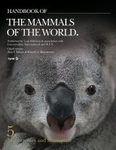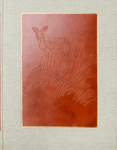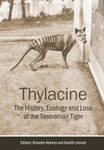Monograph Journal / Magazine
By: Robert S Voss(Author), David William Fleck(Author), Sharon A Jansa(Author)
87 pages, 26 colour & b/w photos and b/w illustrations, 32 tables
![Mammalian Diversity and Matses Ethnomammalogy in Amazonian Peru, Part 3: Marsupials (Didelphimorphia) Mammalian Diversity and Matses Ethnomammalogy in Amazonian Peru, Part 3: Marsupials (Didelphimorphia)]()
Click to have a closer look
About this book
Customer reviews
Related titles
About this book
This report is the third in the monographic series on mammalian diversity and Matses ethnomammalogy in the Yavarí-Ucayali interfluvial region of northeastern Peru. Based on taxonomic analysis of specimens collected in the region, the authors document the occurrence of 19 species of marsupials in the genera Caluromys, Glironia, Hyladelphys, Marmosa, Monodelphis, Metachirus, Chironectes, Didelphis, Philander, Gracilinanus, and Marmosops. The principal taxonomic results include the following: (1) the authors provide a phylogenetic analysis of previously unpublished mitochondrial DNA (mtDNA) sequence data for Caluromys that supports the reciprocal monophyly of all currently recognized species in the genus but reveals substantial heterogeneity in one extralimital taxon; (2) they explain why Marmosa constantiae is the correct name for the southwestern Amazonian taxon previously known as Mar. demerarae, and we diagnose Mar. constantiae from Mar. rapposa, a superficially similar species from southern Peru, eastern Bolivia, and central Brazil; (3) they explain why Mar. rutteri is the correct name for one of the Amazonian species currently known as Mar. regina, and we restrict the latter name to the trans-Andean holotype; (4) they recognize Metachirus myosuros as a species distinct from Met. nudicaudatus based on morphological comparisons and a phylogenetic analysis of new mtDNA sequence data; and (5) they name a new species of Marmosops to honour the late Finnish-Peruvian naturalist Pekka Soini.
Of the 19 marsupial species known to occur in the Yavarí-Ucayali interfluve, 16 have been recorded in sympatry at Nuevo San Juan, the Matses village where we based most of our fieldwork from 1995 to 1999. We explain why we believe the marsupial species list from Nuevo San Juan to be complete (or nearly so), and we compare it with a species list obtained by similarly intensive fieldwork at Paracou (French Guiana). Although Nuevo San Juan and Paracou are 2500 km apart on opposite sides of Amazonia, the same opossum genera are present at both sites, the lists differing only in the species represented in each fauna. We briefly discuss current explanations for spatial turnover in species of terrestrial vertebrates across Amazonian landscapes and provide evidence that the upper Amazon is a significant dispersal barrier for marsupials.
Marsupials are not important to the Matses in any way. In keeping with their cultural inattention to mammals that are inconspicuous, harmless, and too small to be of dietary significance, the Matses lexically distinguish only a few kinds of opossums, and they are not close observers of opossum morphology or behaviour.
Customer Reviews
Monograph Journal / Magazine
By: Robert S Voss(Author), David William Fleck(Author), Sharon A Jansa(Author)
87 pages, 26 colour & b/w photos and b/w illustrations, 32 tables














































